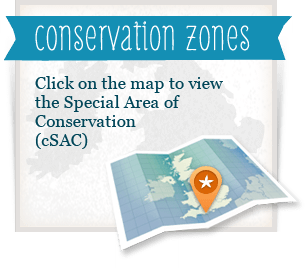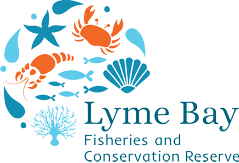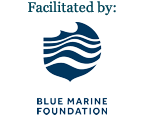
Project Overview

Collaboration between fishermen, conservationists, scientists and regulators in Lyme Bay has achieved a “win-win” model for fishing and conservation.
2020 marked ten years since the Lyme Bay marine protected area was designated, a journey that is captured in The Road to Recovery film and in this short video:
Over a decade of research has shown a measurable revival of marine habitats, rare species and many fish stocks, all resulting in benefits for the fishermen involved in the project. The Lyme Bay model continues to provide a gold standard for the management of marine protected areas, delivering benefits to marine life and the communities that depend on it.
Lyme Bay, on the south coast of England, is a marine biodiversity hotspot, containing important reef habitats that support a number of rare and threatened marine species. In 2008, 60 nautical square miles of the bay were closed to bottom towed fishing to protect the reefs and their rare corals and sea fans. The closure was implemented to allow benthic habitats to recover from damage sustained from fishing with mobile gear and the area was increased to 90 nautical square miles in 2010. However, the removal of mobile gear resulted in a large increase in the use of static gears (pots and nets) which led to some fish stocks being overfished and impaired the ability for habitats to recover.
To manage the changes that came with this designation, the Lyme Bay Fisheries and Conservation Reserve Working Group was set up by Blue Marine Foundation (BLUE) in 2011 and was formally established as a Consultative Committee in 2013. This Committee set out to achieve the establishment of a multiple use marine protected area where fishing is sustainable and well-managed, important habitats and features are protected and the fishing communities receive benefits from fishing responsibly.
Currently, nearly 40 boats in the Reserve operate under a memorandum of understanding and adhere to a voluntary code of conduct which complements the regional Inshore Fisheries and Conservation Authorities (IFCA) statutory regulation of the fishery. Fishermen restrict pots and nets to agreed levels in the interests of the environment and in line with conservation objectives.
Fish handling facilities have been provided within each port, which includes chiller rooms and ice making equipment. These have been installed to improve the quality, shelf-life and value of the landed catches for the fishermen. To promote and market the sustainable, premium quality, seafood caught by fishermen BLUE created the ‘Reserve Seafood’ brand. All of this goes a long way towards the long-term sustainable future of Lyme Bay for both fish and fishermen.
Monitoring studies have been conducted in the area since 2008 by the University of Plymouth in partnership with the fishermen and regional Inshore Fisheries and Conservation Authorities (IFCAs) and these are showing that reefs and fish stocks are recovering.
Over a decade of research has shown a measurable revival of the reefs, rare species and commercial fish stocks within the Lyme Bay Reserve. Between 2008 and 2013 there had been a four-fold increase in the diversity of reef species, a doubling of scallop landings, a quadrupling of juvenile lobsters and the abundance of protected pink sea fan had increased seven-fold.
When the area was hit by extreme storms in 2014 the recovering community was severely damaged, but research by the University of Plymouth shows how the reefs are bouncing back far quicker than previous recovery rates following initial protection of the area indicating how the MPA has increased the resilience of the reef ecosystem.
The evidence gathered on the ecological health of the Reserve has proved invaluable to both regulators and fishers and helped make more informed management decisions. Equally, robust fishing data helps fishers to argue their corner when there is disagreement about management measures. The overall result is better decision-making, buy-in from fishers and local stakeholders and an established forum for discussion and debate.
The model has stimulated huge interest from other fisheries around the UK as well as further afield, placing it at the forefront of delivering a best-practice approach. Southern IFCA (SIFCA) have said that the Reserve is the UK flagship for MPAs and its success both for the environment and for fishing communities gives optimism for other MPA projects around the UK and abroad. BLUE is confident that the Reserve is a template for sustainable fishing in the UK’s inshore waters, not only in the protected areas, but in other areas that choose to adopt a similar approach.




















